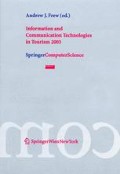Abstract
The paper presents an empirical research whose goal is to study interaction between a Case-Based Reasoning (CBR) system and users without knowledge of CBR. This kind of interaction, called here CBR naïve interaction, can occur frequently in web-based CBR systems and consequently in CBR-based e-commerce systems. The research was led during the usability assessment of COOL-TOUR a web-based CBR system for tourist culture support. The paper describes methods and results of the usability tests as well as a preliminary experiment. The quantitative results are not final but qualitative evidence suggests that the user adopts different models of interaction.
Preview
Unable to display preview. Download preview PDF.
References
Aamodt A. & Plaza E. (1994). Case-based reasoning: Foundational issues, methodological variations, and system approaches. AI Communications.
Dix J. A. et al. (1998). Human-Computer Interaction. Prentice Hall.
Blanzieri E. & Ebranati A. (2000). Supporting tourism culture via CBR. In Blanzieri E. & Portinale L. (editors), Advances in Case-Based Reasoning. Springer, Berlin, 2000.
Cavada, N. Mirzadeh, F. Ricci & A. Venturini (2003). Interactive itinerary planning with Trip@dvice. In Proceedings of the Ninth IFIP TCI3 International Conference on Human-Computer Interaction, September 1–5, 2003-Zurich, Switzerland.
Kolodner J. L. (2003). Case-Based Reasoning. Morgan Kaufmann, Calif., US., 1993.
Munoz-Avila, H., McFarlane D., Aha, D. W., J. Ballas, Breslow L. A., and Nau D. (1999). Using guidelines to constrain interactive case-based planning. In Klaus-Dieter Althof, Ralph Bergmann R., & Branting L. K., (editors) Case-Based Reasoning Research and Development. Springer, Berlin.
Nielsen J. (1999). Design WEB usability: the practice of simplicity. New Riders Publishing.
Norman D. A. (1988). The psychology of everyday things. Harper Collins.
Ricci, F., Avesani, P., Perini A. (1997). CBET case base exploration tool. In Proceedings of the Fifth Congress of the Italian Association for Artificial Intelligence (AP*IA 97), Roma.
Ricci F., Venturini, A., Cavada, D., Mirzadeh, N., Blaas D. & Nones, M. (2003). Product recommendation with interactive query management and twofold similarity. In Proceedings of the 5th International Conference on Case-Based Reasoning (ICCBR Trondheim, Norway, June 23 to 26, 2003.
Ricci, F. & H. Werthner (2002). Case base querying for travel planning recommendation, Information Technology and Tourism, 3(3/4), 215–226, 2002.
Rubin J. (1994). Handbook of Usability Testing: How to Plan, Design, and Conduct Effective Tests. Wiley.
Author information
Authors and Affiliations
Editor information
Editors and Affiliations
Rights and permissions
Copyright information
© 2005 Springer-Verlag Wien
About this paper
Cite this paper
Berruquier, C., Blanzieri, E., Ebranati, A. (2005). CBR Naïve Interaction in a Web-Based System for Tourism. In: Frew, A.J. (eds) Information and Communication Technologies in Tourism 2005. Springer, Vienna. https://doi.org/10.1007/3-211-27283-6_9
Download citation
DOI: https://doi.org/10.1007/3-211-27283-6_9
Publisher Name: Springer, Vienna
Print ISBN: 978-3-211-24148-6
Online ISBN: 978-3-211-27283-1

